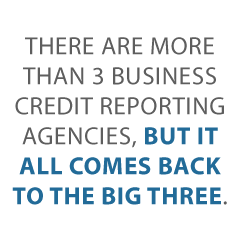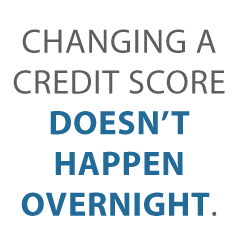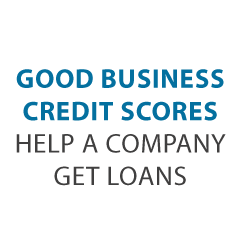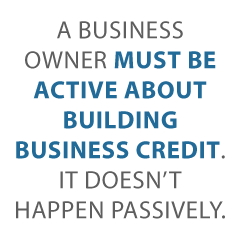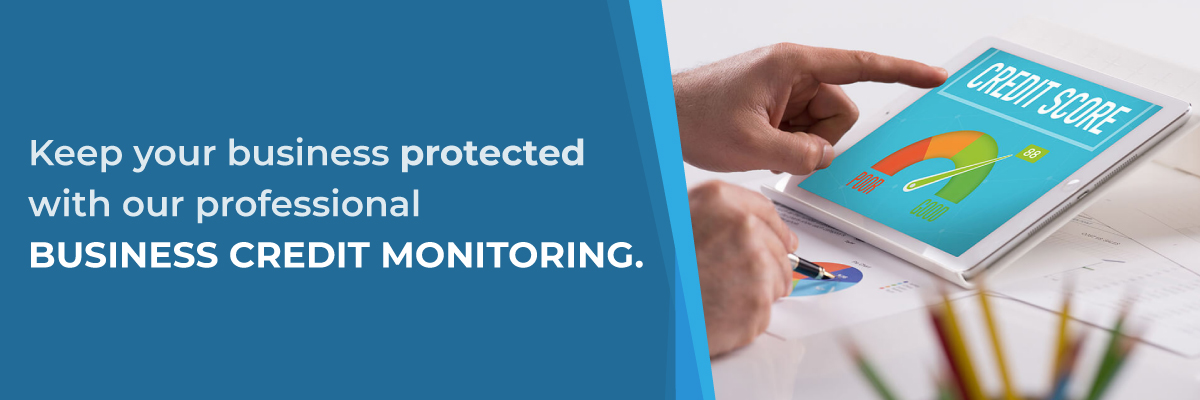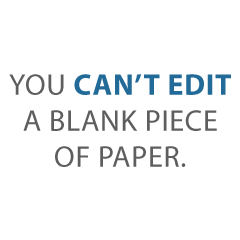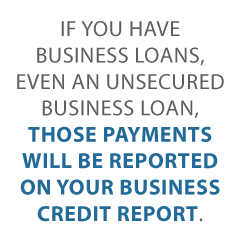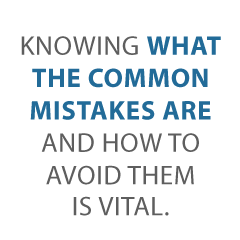
Are There More Than 3 Business Credit Reporting Agencies?
There Are More than 3 Business Credit Reporting Agencies, but it All Comes Back to the Big Three
When most people think of business credit reporting agencies, they think if Dun & Bradstreet. It’s true, the Dun & Bradstreet PAYDEX is one of the scores most commonly used by lenders. In addition to D&B however, there is Experian and Equifax that are fairly commonly used.
Those aren’t the only three however. The FICO SBSS score is gaining popularity in the business credit world as an option for business credit scoring. There are actually a lot more business credit reporting agencies than that, but the one most commonly used outside of the big three of D & B, Experian, and Equifax, is the FICO SBSS.
Keep your business protected with our professional business credit monitoring.
Dun & Bradstreet is the Biggest of the Business Credit Reporting Agencies
There are six different Dun & Bradstreet reporting options, all measuring different areas of credit worthiness. The most commonly used and simplest to understand is the PAYDEX. Generally speaking, this is the most like the consumer FICO score. It measures the speed of payment. It ranges from 1 to 100. A 70 or higher is “good.” For example, a score of 100 means that the company makes payments in advance, and a score of 1 indicates that they pay 120 days late, or more.
What Other Scores Does Dun & Bradstreet Offer?
In addition to the PAYDEX, these other reporting options are available .
● Delinquency Predictor Score
The delinquency predictor score measures the likelihood the company will not pay, will be late paying, or will fall into bankruptcy. The scale is 1 to 5, and a 2 is considered good.
● Financial Stress Score
The financial stress score is a measurement of the pressure on a company’s balance sheet. That is, it indicates the likelihood of a shutdown within a year. It measures on a scale of 1 to 5, with a minimum of 5 and a maximum of 1. A business with a score of 2 is in good shape.
● Supplier Evaluation Risk Rating
This rating ranks the odds of a company making it for the next 12 months. The minimum score is 9 and the maximum is 1. A company with a score of 5 is good is doing okay.
● Credit Limit Recommendation
The credit limit recommendation shows a business’s borrowing capacity. It is a dollar amount recommendation for how much debt a company can handle. Typically, it is used by creditors to determine how much credit to extend.
● D&B Credit Rating
The credit rating is an estimation of overall business risk on a scale of 4 to 1. A two is good. It’s important to note, the rating is given in conjunction with letters. The combination of the letters and numbers relay the company’s net worth.
Even if there isn’t enough information on a business to assign a regular rating, Dun and Bradstreet will assign what they call a Credit Appraisal Score. Unlike a full credit score, this is based on number of employees. In addition, there is an alternative rating based on what data is actually available.
The letter portion of this rating cannot be assigned as good or bad since net worth is not necessarily an indicator of how stable a business is.
Keep your business protected with our professional business credit monitoring.
Experian Business Credit Score
Experian offers a number of different scores as well. Lenders can choose to use any or all of them. Of course, each one tells them something different. Consequently, it takes all the scores put together to get a complete credit picture from this business credit bureau. Still, not all lenders look at all the scores that are available.
Intelliscore Plus
The Intelliscore Plus credit score shows credit risk based on statistics. It is a highly predictive score. As such, its main purpose is to assist users in making well informed credit decisions.
The Intelliscore scores range from 1 to 100. The higher your score, the lower your risk class. The opposite is true as well, meaning the lower your score, the higher your risk class.
Score Range Risk Class
76 – 100 Low
51 – 752 Low – Medium
26 – 503 Medium
11 – 254 High – Medium
1 – 105 High
How Does Experian Business Credit Calculate the Intelliscore Plus Score?
One of the things Intelliscore is most known for is the identification of key factors that can indicate how likely a business is to pay their debt. There are over 800 commercial and owner variables used to calculate an Intelliscore Plus credit score. Here’s the breakdown:
● Payment History
This is just your current payment status. It’s how many times accounts have become delinquent. Additionally, It also shows how many accounts are currently delinquent, as well as your overall trade balance.
● Frequency
This one shows how many times your accounts have been sent to collections. It also notes the number of liens and judgments you may have. Bankruptcies related to your business or personal accounts are included as well.
Frequency can also incorporate information regarding your payment patterns. Were you regularly slow or late with payment? Did you decrease the number of late payments over time? That affects your score.
● Monetary
This specific factor focuses on how you make use of credit. For example, how much of your available credit are you using right now? Do you have a high ratio of late balances when compared with your credit limits?
Of course, if you are a new business owner, a lot of this information will not exist yet. Intelliscore Plus handles this by using a “blended model” to identify your score. That means that they take your personal consumer credit score into account when determining your business’s credit score.
The Experian Financial Stability Risk Score (FSR)
FSR predicts the potential of a business going bankrupt or not paying its debts. The score identifies the highest risk businesses by making use of payment and public records. These records include all of the following and more.
- high use of credit lines
- severely late payments
- tax liens
- judgments
- collection accounts
- risk industries
- length of time in business
Experian’s Blended Score
This is a one-page report that provides a summary of the business and its owner. A combined business-owner credit scoring model is more comprehensive than a business or consumer only model. Blended scores have been found to outperform consumer or business alone by 10 – 20%.
Equifax is Another One of the Bigger Business Credit Reporting Agencies
Equifax shows three distinct business determinations on its business credit reports. These are the Equifax payment index, your business’s credit risk score, and its business failure score.
Similar to the PAYDEX score, Equifax’s payment index, which is a measurement on a scale of 100, shows how many of your small business’s payments were made on time. These include both data from creditors and vendors.
Equifax Credit Risk Score
Equifax’s credit risk score checks how likely it is that your company will become severely delinquent on payments. Scores range from 101 to 992, and they evaluate:
- Available credit limit on revolving credit accounts, which includes credit cards
- Your company’s size
- Proof of any non-financial transactions (such as merchant invoices) which are late or were charged off for two or more billing cycles
- Length of time since the opening of the earliest financial account
Equifax Business Failure Score
Lastly, Equifax’s business failure score takes a look at the risk of your business shutting down. It runs from 1,000 to 1,600. And it judges these factors:
- Total balance to total current credit limit average utilization in the past three months
- The amount of time since the opening of the oldest financial account
- Your small business’s worst payment status on all trades in the last 24 months
- Documentation of any non-financial transactions (such as merchant invoices) which are late or are on a charge off for two or more billing cycles
For the credit risk and the business failure scores, a rating of 0 means bankruptcy.
Equifax Scores
A good Equifax score for your business is as follows:
- Payment Index 0 to 10
- Credit Risk score 892 to 992
- Business Failure score 1400 to 1600
Keep your business protected with our professional business credit monitoring.
FICO SBSS
The FICO SBSS, or FICO Liquid Credit Small Business Scoring Service, is the business version of your personal FICO credit score. It was becoming more and more common for lenders to use this score, rather than the Experian or even the D&B Paydex business credit score.
Unlike your personal FICO, the SBSS reports on a scale of 0 to 300. Of course, the higher the better. However, most lenders require a score of at least 160.
There are few reasons lenders favor this score. First, FICO uses business credit information from Dun & Bradstreet, Experian, and Equifax in their business credit score calculation. Second,they also take into account personal credit score. Lastly, they consider the lenders preferences for which factors are most important.
Why Rely on Other Credit Reporting Agencies, and How Do Lender Preferences Affect Your Score?
This is a huge difference from other business credit scoring models. The SBSS uses your business credit score from other business credit reporting agencies. They also use your personal credit score and other financial information such as business assets and revenue. The big change however, is they let the lender decide how much each factor actually affects the score. It is a total global financial picture rolled into one score, and the lender gets to choose which factors have the most impact.
This means you almost always go into a lender totally blind as to what your FICO SBSS credit score may be. Here is how it works.
How Lenders Get Your FICO SBSS Business Credit Score
- You turn in your application and all necessary financial documentation to the lender.
- The lender processes this information and sends it to FICO with a request for your SBSS score.
2.5. This is where it gets interesting. The lender can weight certain factors that make up your SBSS score. Your score can vary depending on how a lender weights each factor. For example, a lender can put more weight on your personal credit score or your business credit. It is their choice. This means your FICO SBSS can change from lender to lender even if you haven’t done anything to change it.
- FICO then searches business credit information from business credit agencies including D&B, Experian, and Equifax. Since these business credit reporting agencies have already scored the business side of things, the FICO SBSS just used the data from them for that piece of their calculation. If they cannot pull enough scoring information from one, they move on to the next. If there is not enough information from any of them, then it uses personal credit and business financials only.
- Using the lender’s weighting preferences, personal credit, business credit, and business financial data the system calculates the FICO SBSS score.
- You get either approval or denial based on your score.
SBA Credit Scoring
In 2012 the SBA began using credit scoring in the loan approval process. Since 2014, they have used it on all loans up to $350,000, not including the SBA Express and Export Express.
They use the FICO SBSS out of all the business credit reporting agencies for their scoring needs. This is likely because by doing so, they get information from the other major business credit reporting agencies plus some.
The information they receive from FICO SBSS helps them to expedite credit decisions. In fact, overall statistics on the $60 billion-plus portfolio at the Small Business Administration show that those businesses with scores at or above the 140 cut-off have had very good payment history.
While the minimum required credit score is 140, the SBA usually will not approve applications until the borrower’s score is 160 or higher. Some lenders would rather see even higher scores. An ideal minimum is 180.
There Are More Than Three Business Credit Reporting Agencies
The truth is, there are definitely more than three business credit reporting agencies. The FICO SBSS is just one that many do not know about. However, like many of the other business credit reporting agencies, they use information from the big three, D&B, Experian, and Equifax, in their calculations. What does this mean for your business? Pretty much regardless of which of the business credit reporting agencies your lender uses, the big three are likely still going to impact your score in some way. Also, it means you cannot ignore your personal credit score. It can make a difference on your ability to get funding even when using your business credit.
The post Are There More Than 3 Business Credit Reporting Agencies? appeared first on Credit Suite.

